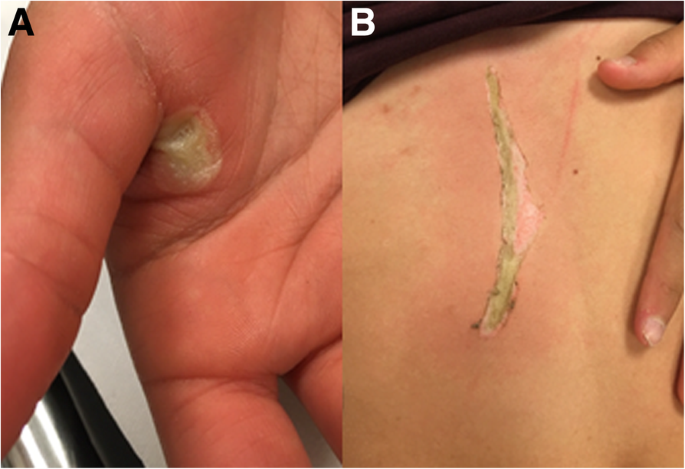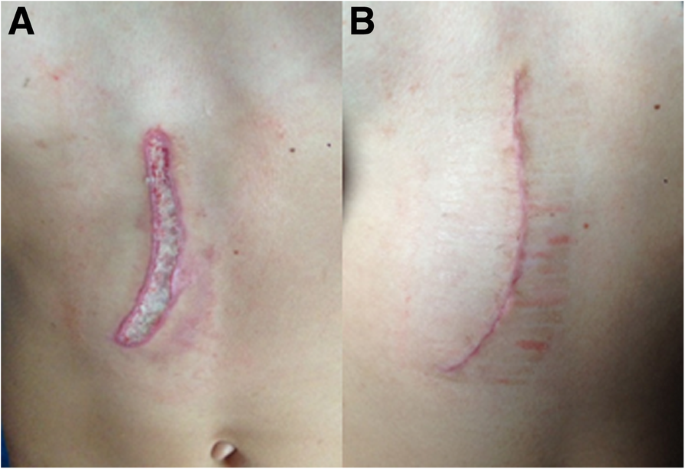- Home
- Editorial
- News
- Practice Guidelines
- Anesthesiology Guidelines
- Cancer Guidelines
- Cardiac Sciences Guidelines
- Critical Care Guidelines
- Dentistry Guidelines
- Dermatology Guidelines
- Diabetes and Endo Guidelines
- Diagnostics Guidelines
- ENT Guidelines
- Featured Practice Guidelines
- Gastroenterology Guidelines
- Geriatrics Guidelines
- Medicine Guidelines
- Nephrology Guidelines
- Neurosciences Guidelines
- Obs and Gynae Guidelines
- Ophthalmology Guidelines
- Orthopaedics Guidelines
- Paediatrics Guidelines
- Psychiatry Guidelines
- Pulmonology Guidelines
- Radiology Guidelines
- Surgery Guidelines
- Urology Guidelines
Burn wounds and electrical injury in a bathtub due to smartphone: a case report

Dr Sem F. Hardon at Department of Surgery, Amsterdam UMC - VU University Medical Center, Amsterdam, The Netherlands and colleagues have reported a rare case of Burn wounds and electrical injury in a bathtub due to smartphone.The case has appeared in the Journal of Medical Case Reports.
Increased smartphone use among minors makes our population more prone to electrical injury. Despite regulations on electrical home safety standards, smartphones and chargers still pose a risk for severe injury among users.
A 13-year-old Caucasian girl with a deep burn injury was referred to our burn center. She had no medical history. She had held a charging smartphone in her right hand while taking a bath. After hearing a loud scream, the mother of the patient disconnected the charger from the sparkplug and took her daughter out of the bath.
According to the mother, the patient was briefly unconscious and showed muscle contractions. After receiving a precordial thump, the patient became responsive again.
The patient was evaluated according to the Advanced Trauma Life Support guidelines and was founded to be stable both with regard to respiration and hemodynamically.
Further physical examination showed two deep burns: (1) a circumscribed, oval-shaped lesion of approximately 1 × 1 cm, with a central zone of pallor on the palmar side of the hand between thumb and index finger, and (2) a stripe-shaped laceration of the skin of approximately 1 × 12 cm, on the abdomen, near the epigastric region, surrounded by a zone of hyperemia. The patient’s total body surface area burned was less than 0.5%.

The patient’s serum creatinine kinase (CK) level was 1294 U/L, which is severely elevated. No abnormalities were seen in electrocardiograms. The patient was admitted to the pediatric ward for observation and a tertiary survey. The day after admission, her CK level was slightly elevated to 1400 U/L. Her urine was tested for myoglobinuria but showed no signs of rhabdomyolysis. Furthermore, the patient had no complaints or other abnormalities at the tertiary survey and was therefore discharged to home at on postburn day 2.
Owing to amnesia, the patient failed to give a detailed reconstruction of the moment of injury. Muscle twitches, the severity of the burns, and muscle decay (elevated CK level) indicated that an alternating current with 240 V caused the electrical injury, which is the standard voltage in the Netherlands. There has probably been direct conductance between main voltages from the spark plug to a grounded element in the bathtub, such as the drain. Another explanation is that the current flowed over the outer side of the charging cable, which was moist, to the patient. Moist skin is more vulnerable to electrocution injury because of decreased resistance.

Initially, the burns were treated conservatively with silver sulfadiazine cream, which was altered to fusidic acid cream after 1 week. This treatment was adequate for the burn wound on the hand because this was healing. After 21 days, the abdominal burn had healed insufficiently. Therefore, surgical resection and transposition of the skin were performed. This resulted in satisfactory healing with little scarring.
For more details click on the link: https://doi.org/10.1186/s13256-019-2231-4

Disclaimer: This site is primarily intended for healthcare professionals. Any content/information on this website does not replace the advice of medical and/or health professionals and should not be construed as medical/diagnostic advice/endorsement or prescription. Use of this site is subject to our terms of use, privacy policy, advertisement policy. © 2020 Minerva Medical Treatment Pvt Ltd